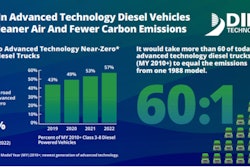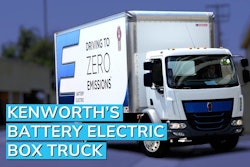I used to drive from San Jose, California, to Portland, Oregon and back to visit family on long weekends.
It’s a 650-mile commitment, on par with the maximum distances that an efficient Class 8 truck driver can legally complete in an 11-hour driving period averaging 60 mph. The obligations to family meant I did this trip in all seasons, and in all weather — even negotiating 4,000-feet altitude mountain passes during heavy snow when the semi-trucks were having trouble negotiating the roads.
I’m sure nearly everyone has similar stories. The point is I had a lot of time to think on the road. Invariably, fuel management was always on my mind — where I needed to stop to minimize downtime to keep my average speed up.
I always was wondering just what the “E” in the fuel gauge really meant. How far could I stretch out the refueling and just how efficient could I drive the vehicle. Today, it’s called hypermiling. When I was doing it, it was just ignorance. The owner’s manuals are pretty thin about just how much is actually left in the tank when the fuel gauge points at E. I was running late for a family wedding on one trip and really stretched out the fuel stops, only to wind up out of gas one exit short of a fuel station in Wilsonville, Oregon. It was a different time (pre-cell phone and pre-social media), and a kind person stopped and gave me a ride to and from the gas station. I got to the wedding on time.
[Related: Peterbilt showcases its new SuperTruck]
Fast forward to 2010 and work on the Department of Energy SuperTruck I program with Peterbilt and Cummins. The project’s entire goal was to maximize fuel economy with technology that was realistically capable of going into production in a few years. Weight management was crucial as adding technology means adding weight, so the engineers had to be creative to offset those gains with reductions in other systems. The goal was to improve freight efficiency by 50% for a targeted 65,000 lbs. gross vehicle weight tractor and trailer system on a representative high mileage route.
A baseline 6 mpg tractor on this route had two 100-gallon fuel tanks, one on each frame rail saddle mounted under the sleeper, giving it a potential range of 1,200 miles between fuel stops. The driver, not so equipped for distance, likely could only get about 600 miles per day.
The SuperTruck was going to exceed 11 mpg, meaning that 200 gallons of fuel would have given it an astronomically unnecessary 2,200 miles between fueling. Fleets get paid to move paying freight, not carry fuel. A gallon of diesel weighs about 7.2 lbs. That extra fuel would have reduced the daily freight capability of the driver by more than 1,000 lbs. The first weight savings opportunity was eliminating one of the two 100-gallon fuel tanks, saving not only the unnecessary fuel, but all the hardware that went with it: the tank, the brackets, extra fuel lines, sensor lines, etc.
There were other weight savings opportunities. A typical steel trailer at that time might weigh in at more than 14,000 lbs., while a comparable lightweight aluminum one would cross the scale well below 13,000 lbs. Going to a more exotic material like carbon fiber might get the trailer well below 12,000 lbs. Replacing dual tires with wide-base tires and aluminum wheels could save over 500 lbs. Other material substitutions could be done all over the tractor and trailer to save critical weight, allowing additional technologies to be installed on the truck. In the end, the weight savings far exceeded the weight of the new added components so that additional freight was possible while maintaining the 65,000 lbs. GVW.
Aerodynamic improvements were achieved to reduce the drag of the tractor-trailer combination in excess of 50%. Today, truck makers salivate over fractions of percent gains in production vehicles. Low rolling resistance tires were also key to improving efficiency.
Software came into play as well. Predicting grade changes could allow the truck’s fuel control system to adjust speeds to minimize energy waste from braking on downhill sections, and reduce the tendency to climb and crest hills faster than needed. Engineers even proposed route planning software that would estimate the required fuel for that particular day’s actual route so that the truck carried just enough fuel to accomplish its daily mission with some margin of security.
All the SuperTruck I programs exceeded the aggressive targets. Many of the technologies, especially the aerodynamic improvements, were incorporated into the production new tractor models introduced between 2014 and 2020.
NACFE’s Run on Less in 2017 and Run on Less Regional in 2019 and showed that in long-haul real-world operations, production tractors driven by efficiency-minded drivers could exceed 10 mpg in long haul and high 8 mpg for the diesels in the Run on the more fuel-demanding regional haul routes.
The progress did not stop there. The Department of Energy launched the SuperTruck II sequel in 2016. Those prototypes have started to be revealed in the last year by Daimler, Cummins/Peterbilt and Navistar. Volvo and Paccar are expected to see the light of day within the next year.
Navistar claims their SuperTruck II has exceeded an amazing 16 mpg, combining a range of new technologies including elements of electric trucks in a hybrid configuration. The baseline of comparison for SuperTruck is a Model Year 2009 Class 8 tractor, typically averaging just over 6 mpg. The Navistar results represent an astounding 160% improvement in fuel economy potential in a short 14 years.
It is too early to see which of these new technologies from the SuperTruck II teams will make it into production tractors, but suffice it to say that many of the technologies are applicable to all types of powertrains. Aerodynamics, lightweighting, etc. are universally applicable whether the future is battery electric, hydrogen fuel cell, hydrogen internal combustion (ICE), hybrids, or renewable fuel-based ICE trucks.
Many of these technologies contribute to getting more mileage per unit of energy consumed, or simply, range extension. The SuperTruck programs have contributed significantly to detailing the understanding of the entire tractor-trailer system in real-world operational use. The programs have fleshed out where the real-world opportunities are for technology investment to get more freight ton miles per gallon.
Congratulations to all the teams from SuperTruck I and II for their devotion to detail and successes.













